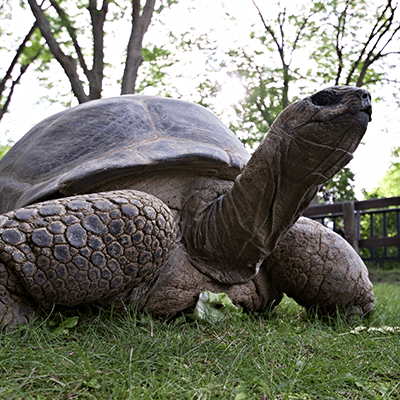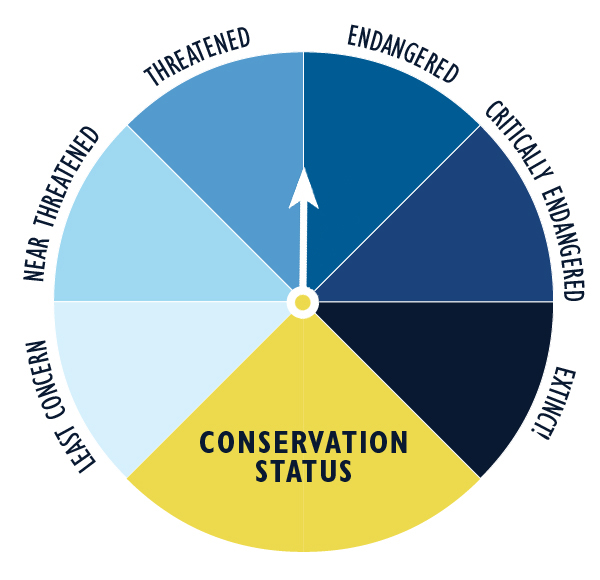
About Aldabra Tortoise
The Aldabra tortoise is the second largest tortoise in the world! Their name comes from Aldabra Atoll, the island that they are native to in the Seychelles Archipelago. Populations have also been introduced to two other islands in Seychelles.
Habitat
Aldabra tortoises live in grasslands, scrub forest, and coastal dunes in the Seychelles Archipelago.
Diet
They eat mainly plants (grasses, leaves, stems, and herbs) with some invertebrate animals and meat.
Family Life
Aldabra tortoises breed between February and May. Female tortoises lay four to 14 eggs at a time in holes up to ten inches deep, and the eggs hatch after three to six months. When the tortoises are born, they are a tiny three inches!
Conservation Status
The conservation status of the Aldabra Tortoise is classified as vulnerable.
Threats
- Habitat destruction and the introduction of new predators such as rats, cats, and other competitors such as goats have further decreased the Aldabra species over time, stemming back to the 17th century.
- Among the giant tortoise family, the Aldabra species is one of three to survive today in their region of the world, both in the wild and in captivity.
Facts about Aldabra Tortoise
Class:
Reptilia (reptiles)Order:
Testudines (turtles)Family:
Testudinae (turtles)Genus:
Geochelone (land turtle)Species:
Geochelone gigantea (Aldabra tortoise)Life Span:
65 – 90 yearsSize:
3 – 5 feet (0.9 – 1.5 m)Weight:
Male: 550 pounds (259 kg) / female: 350 pounds (158 kg)
Fun Facts
- These tortoises actually create a habitat that smaller animals depend on. After a heavy grazing, “tortoise turf” (a combination of grasses and herbs) is left behind.
- This species is estimated to live to 100 – 150 years old.
- Staying cool? These tortoises try to avoid the heat by finding shady areas with pools of water or mud holes to cool off.